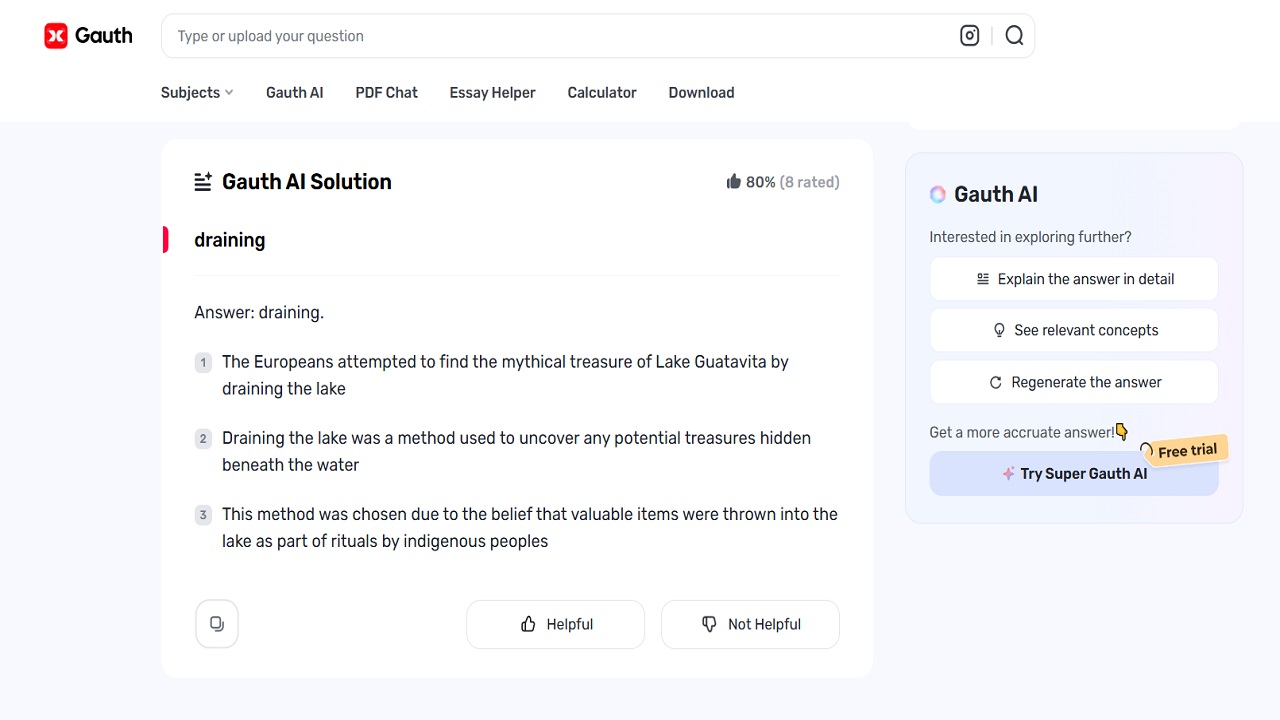In the modern industrial world dominated by artificial intelligence, searching for the correct and fast answer to certain trivia has never been easier. In this regard, one of the most notable tools in this field is Gauth AI – an artificial homework helper that offers solutions and comprehensive explanations of specific steps to solve problems in different fields, such as general knowledge. In this article, we will describe the ways Gauth AI contributes to providing the answers to the questions about general knowledge concerning the most asked question: which method did europeans use to try to find the lake guatavita's mythical treasure?
Benefits of Using Gauth AI for General Questions
General knowledge can be considered as the awareness of facts and data in different fields and disciplines, such as historical or geographical, as well as the knowledge of scientific and cultural facts. Thus, Gauth AI is ready to process large amounts of information and provide learners and any curious individual with relevant knowledge. Here’s how Gauth AI excels in this domain:
Step-by-Step Explanations
This is one of the most outstanding features of Gauth AI since it has the capability of paring down questions into smaller, understandable chunks. General knowledge questions entail offering a brief history of the topic, facts surrounding the event, and other related matters.
Quick and Efficient Responses
It is meant to provide answers within the shortest time possible and this is good for students or anyone who needs facts and quick information.
User-Friendly Interface
The design of the interface of Gauth AI is simple, which enables users to type in their questions or upload their questions. Due to this, it is a preferred tool for anyone who requires information on the spot.
Case Study: Chasing the Legend of Treasure
To illustrate the capabilities of Gauth AI in answering general knowledge questions, let’s delve into the historical query: What did Europeans employ in an attempt to locate the treasure said to lie at the bottom of the Lake of Guatavita?

Lake Guatavita is a famous lake situated in the territory of present-day Colombia and has always been associated with legends and history. From the history of the Muisca indigenous people, the lake was used to offer to gods where they would throw gold and other valuable items into the water. This legend motivated European treasure hunters to go on a relentless search in search of the fabulous treasures of this legend.
Gauth AI – Step-by-Step Answer
Historical Context
After that, Gauth AI delivers a short historical introduction to Lake Guatavita as a sacred body of water of the Muisca people and the legend that appealed to the Europeans.
Detailed Methodologies
The Europeans then describe the particular steps they took to locate the treasure, as presented by the AI. During the 16th century, Spanish conquistadors tried to dry up portions of the lake by digging a trench to reduce the water level and bring out the gold. However, in the 19th and early 20th centuries, other different efforts were made such as pumping and blasting to empty the lake.
Outcome and Impact
These treasure hunts are then followed by Gauth AI which concludes about the results of these treasure hunts. However, the attempts made were complex, and not much of the treasure was obtained; the lake was also almost devastated. This part of the response gives a brief of the environmental and cultural impacts of such explorations.
Final Thoughts
Summing up, Gauth AI is an effective tool that can be used in the task of answering questions concerning general trivia. The fairly accurate and up-to-date information makes it a very useful tool for learners, teachers, and anybody interested in gaining new knowledge. Whether you are looking for historical facts such as the location of the treasure of Lake Guatavita or a simple answer to a question, Gauth AI is the best place to get your information from.


